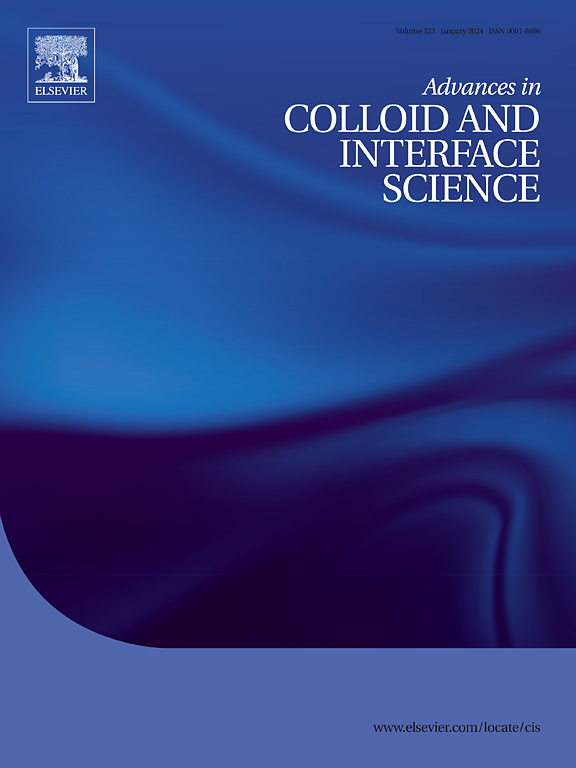Recent advancements in the synthesis of anion exchange membranes and their potential applications in wastewater treatment
IF 15.9
1区 化学
Q1 CHEMISTRY, PHYSICAL
引用次数: 0
Abstract
Water treatment procedures are increasingly utilized for resource recovery and wastewater disinfection, addressing the current challenges of clean water depletion and wastewater management. Various pollutants, including dyes, acids, pharmaceuticals, and toxic heavy metals have been released into the environment through industrial, domestic, and agricultural activities, posing serious environmental and public health risks. Addressing these issues requires the development of more effective waste treatment processes. Membrane-based treatment technologies offer significant advantages, including high efficiency, versatility, and cost-effectiveness, making them a promising solution for mitigating the impact of these pollutants. In view of this, the potential of ion exchange membranes (IEMs) is continuously increasing due to their advanced characteristics compared to conventional techniques. Anion exchange membranes (AEMs), a special class of IEMs, selectively allow anions to pass through their pores due to the positive charge on their surface. This selective passage aids in resource recovery and removing specific types of pollutants. This review covers preparation methods, modification techniques, and classification of AEMs. It offers a practical classification based on the method of synthesis and structural properties of AEMs. The water-based applications of AEMs including, electrodialysis, diffusion dialysis, and electro-electrodialysis for various wastewater treatments such as heavy metal recovery, dye removal, pharmaceutical removal, and acid separation, have been discussed in detail. Additionally, the effect of various operational parameters on the performance and SWOT (strengths, weaknesses, opportunities, and threats) analysis of AEMs in effluent treatment are presented. The review provides detailed insights into the current status, challenges, and future directions of AEM-based technologies, offering suggestions for future advancements.

阴离子交换膜的合成及其在废水处理中的应用研究进展。
水处理程序越来越多地用于资源回收和废水消毒,解决当前清洁水枯竭和废水管理的挑战。各种污染物,包括染料、酸、药品和有毒重金属,已通过工业、家庭和农业活动释放到环境中,构成严重的环境和公共健康风险。解决这些问题需要开发更有效的废物处理工艺。膜处理技术具有显著的优势,包括高效率、多功能性和成本效益,使其成为减轻这些污染物影响的有希望的解决方案。鉴于此,离子交换膜(IEMs)由于其与传统技术相比具有先进的特性,其潜力不断增加。阴离子交换膜(AEMs)是一类特殊的离子交换膜,由于其表面的正电荷,阴离子可以选择性地通过其孔。这种选择性通道有助于资源回收和去除特定类型的污染物。本文综述了AEMs的制备方法、改性技术和分类。它提供了一个实用的分类基于合成方法和结构性质的AEMs。详细讨论了AEMs的水基应用,包括电渗析、扩散渗析和电渗析在各种废水处理中的应用,如重金属回收、染料去除、药物去除和酸分离。此外,还介绍了各种操作参数对AEMs在污水处理中的性能和SWOT(优势、劣势、机会和威胁)分析的影响。本文详细分析了基于aem技术的现状、挑战和未来发展方向,并对未来的发展提出了建议。
本文章由计算机程序翻译,如有差异,请以英文原文为准。
求助全文
约1分钟内获得全文
求助全文
来源期刊
CiteScore
28.50
自引率
2.60%
发文量
175
审稿时长
31 days
期刊介绍:
"Advances in Colloid and Interface Science" is an international journal that focuses on experimental and theoretical developments in interfacial and colloidal phenomena. The journal covers a wide range of disciplines including biology, chemistry, physics, and technology.
The journal accepts review articles on any topic within the scope of colloid and interface science. These articles should provide an in-depth analysis of the subject matter, offering a critical review of the current state of the field. The author's informed opinion on the topic should also be included. The manuscript should compare and contrast ideas found in the reviewed literature and address the limitations of these ideas.
Typically, the articles published in this journal are written by recognized experts in the field.

 求助内容:
求助内容: 应助结果提醒方式:
应助结果提醒方式:


